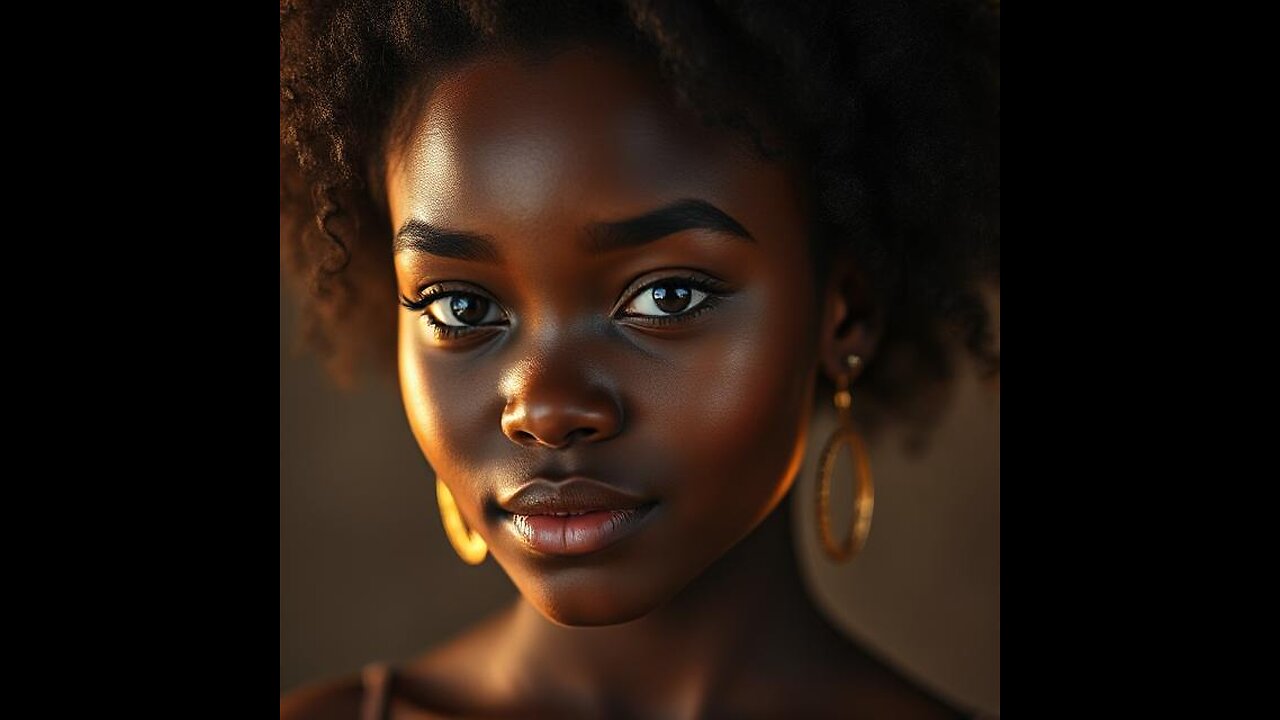Premium Only Content

How to Determine Skin Tone and Undertone!
What Does Skin Tone Mean?
The amount of melanin in your skin mostly determines its surface color, which is referred to as your skin tone. In general, skin tones can be divided into three groups:
Fair or porcelain skin tones with peach or pink undertones are considered light skin tones.
Shades of caramel, olive, or beige with well-balanced undertones are considered medium skin tones.
Rich brown to ebony hues with undertones of gold, crimson, or blue are known as deep skin tones.
Skin tone typically remains within the same range, though it may vary somewhat with sun exposure or tanning.
What’s Undertone?
Your undertone is constant, unlike your skin tone. The faint color beneath your skin’s surface determines how colors appear on you. Three primary categories can be used to classify undertones:
Cool Undertones: Shades of pink, red, or blue.
Warm Undertones: Peach, yellow, or golden tones.
Neutral Undertones: A blend of warm and cool tones
Understanding your undertone is crucial when selecting lipstick, concealer, foundation, and clothes.
The Importance of Understanding Your Skin Tone and Undertone
Knowing your distinct complexion aids in:
Choosing a foundation shade that blends in naturally is known as makeup shopping.
Clothing selections: Choosing hues that accentuate your shine.
Choosing jewelry: determining if you look better in gold or silver.
Selecting hair colors that go well with your undertones is important.
Purchasing skincare goods: Certain products are made to suit specific skin tones.
How to Determine Your Skin Tone: A Comprehensive Guide
Step 1: Examine Your Nude Skin in the Sunlight
Sit close to a window, wash your face, and take off all of your makeup. Natural light is ideal because artificial lighting can warp color. Check to see if your skin appears deeper, medium, or fair.
Step 2: Contrast With Typical Skin Tone Types
You probably have light skin if you burn easily and don’t get tanned very often.
If you tan quickly and don’t burn often, you probably have deep skin.
Step 3: Use Examples From Celebrities
The test of veins :
Examine your wrist’s veins in natural light: Veins that are blue or purple indicate a cool tone. Warm undertone → Green veins. Combining both results in a neutral undertone.
Undertone and skin tone are not the same thing.
When using artificial light, make sure to check during the day.
Ignoring undertones: Your undertone remains constant despite tanning.
Shades of Foundation That Work Best for Every Undertone
Cool Undertones
Seek out hues that are marked “C” - coolr ose, or pink.
Cool tan, rosy beige, and porcelain are the best foundation colors.
Comforting Undertones
Seek out hues that are marked W -warm, golden, or yellow.
Chestnut, honey, caramel, and golden beige are the best foundation colors.
Undertones of Neutrality
The Best Colors for Clothing Based on Undertone and Skin Tone
Jewel tones like sapphire, emerald, and amethyst are associated with light skin and chilly undertones.
Warm undertones and light skin: mustard, peach, coral, and warm pastels.
Cool undertones with medium skin: teal, lavender, and navy blue.
Warm undertones of olive green, rust, camel, and burnt orange characterize medium skin.
Deep skin with cool undertones: frosty hues and vibrant jewel tones.
Gold, copper, crimson, and warm browns are undertones of deep skin.
Gold, copper, crimson, and warm browns are undertones of deep skin.
Undertone-Complementing Jewelry
Cool undertones: white gold, platinum, and silver.
Warm undertones: bronze, rose gold, and yellow gold.
Neutral undertones = Gold and silver both have a pleasing appearance.
FAQ’s
Is it possible for my undertone to evolve over time?
No, you have a genetic undertone that remains constant throughout your life.
2. How can I determine my neutrality?
You’re probably neutral if your veins appear both blue and green and your jewelry is attractive in both silver and gold.
-
 33:30
33:30
The Bryce Eddy Show
4 days ago $0.03 earnedMonty Bennett: HERO Model to Fight Crime
8.15K1 -
 0:41
0:41
Living Your Wellness Life
3 days agoThe Prime-Years Transition
1.01K -
 LIVE
LIVE
The Bubba Army
21 hours agoJimmy Kimmel's Back - Bubba the Love Sponge® Show | 9/23/25
2,346 watching -
 34:15
34:15
Actual Justice Warrior
2 days agoIlhan Omar CHEERS Charlie Kirk's Murder
49K74 -
 12:13
12:13
itsSeanDaniel
1 day agoMAGA Senator STANDS UP for Charlie Kirk and Free Speech
31.9K21 -
 30:39
30:39
Comedy Dynamics
1 month agoBest of Jim Breuer: And Laughter for All
128K4 -
 2:56:22
2:56:22
FreshandFit
14 hours agoDo Black People Deserve Reparations? DEBATE With Woman Propaganda.
200K193 -
 1:58:26
1:58:26
Badlands Media
17 hours agoBaseless Conspiracies Ep. 151: Netanyahu, Dual Loyalties, and the Kirk Connection
50.1K34 -
 4:55:05
4:55:05
Akademiks
10 hours agoYoung Thug Dissing YFN Lucci. Ready to Go back to Jail. Offset vs Cardi b
74.4K4 -
 2:02:45
2:02:45
Inverted World Live
11 hours agoIs the Rapture Tomorrow? | Ep. 111
128K48